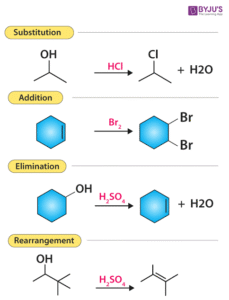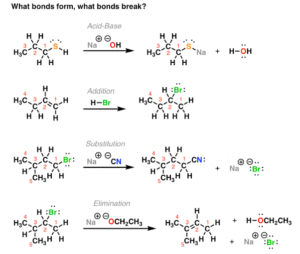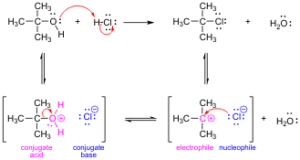Back to: Organic Chemistry 100 Level
Welcome to class!
Hello superstar! It’s always a joy to see your curiosity and energy shine through as we continue our Chemistry journey. Today, we’re starting something truly exciting—Organic Reaction Mechanisms. Don’t let the big name scare you! This lesson is all about understanding how and why organic compounds react the way they do. Just like you might want to know why your phone stops working when it rains, chemists also want to know how chemical reactions happen. Let’s break it down in a simple, relatable way.
Introduction To Organic Reaction Mechanisms
What Are Organic Reaction Mechanisms?
Imagine you’re watching a Nollywood movie. You don’t just want to know what happened at the end—you want to see how it all happened, step-by-step, right? That’s exactly what a reaction mechanism does in Chemistry. It’s the step-by-step breakdown of what happens during a chemical reaction.

Instead of just writing a chemical equation that shows the reactants and the products, a mechanism shows each stage of the reaction—how bonds break, how atoms move, and how new bonds are formed.
Organic reactions often involve movement of electrons, and these movements are shown using curved arrows. These arrows help us trace the journey of the reaction from start to finish.
Why Are Mechanisms Important?
Understanding mechanisms helps us:
Predict how different organic compounds will behave
Design new drugs or products
Solve problems when reactions go wrong
It’s like having a map that shows all the turns and shortcuts before a road trip.
Types of Organic Reaction Mechanisms
There are several ways organic compounds react. The three most common types of mechanisms are:
1. Substitution Reactions
This is when one group replaces another in a molecule.
Think of it like removing one friend from a group chat and adding another one in their place.
Example:
When hydroxide ion (OH⁻) replaces a halogen (like Cl) in an alkyl halide to form an alcohol.

2. Addition Reactions
This is when two molecules combine to form one bigger molecule.
Imagine adding more okra into your soup—it becomes fuller and richer.
Example:
Alkenes reacting with hydrogen (H₂) to form alkanes.
3. Elimination Reactions
Here, a small molecule is removed from a larger one, forming a double bond.
It’s like taking water out of a wet cloth and leaving it dry and lighter.
Example:
Dehydration of alcohols to form alkenes and water.
Reaction Intermediates
In many reactions, there are temporary species called intermediates. They appear in the middle of the reaction but don’t show up in the final equation.
Examples include:
Carbocations (positively charged carbon)
Carbanions (negatively charged carbon)
Free radicals (atoms with unpaired electrons)
They are like actors who appear in only one scene of the movie but still play an important role.
Electron Movement – The Curved Arrow Notation
In mechanisms, curved arrows show the movement of electrons. A full arrow (→) means a pair of electrons is moving. A half-arrow (→•) means a single electron is moving (often in free radical reactions).

Always start the arrow from the electrons and point to where they are going.
Summary
- Organic reaction mechanisms explain how reactions happen, step by step.
- There are three main types: substitution, addition, and elimination.
- Intermediates like carbocations and free radicals may form temporarily.
- Curved arrows show how electrons move during the reaction.
Evaluation
- What is an organic reaction mechanism?
- Name the three main types of organic reaction mechanisms.
- Give one real-life example or analogy for a substitution reaction.
- What are reaction intermediates?
- What does a curved arrow represent in a reaction mechanism?
You’re on a roll, champ! Today’s lesson showed that Chemistry is not just about memorising formulas—it’s about understanding the process. You’ve started to see the secret moves behind the scenes of organic reactions. And trust me, with Afrilearn by your side, you’ll keep going from strength to strength. I’m super proud of you. Let’s keep this energy for the next lesson!
